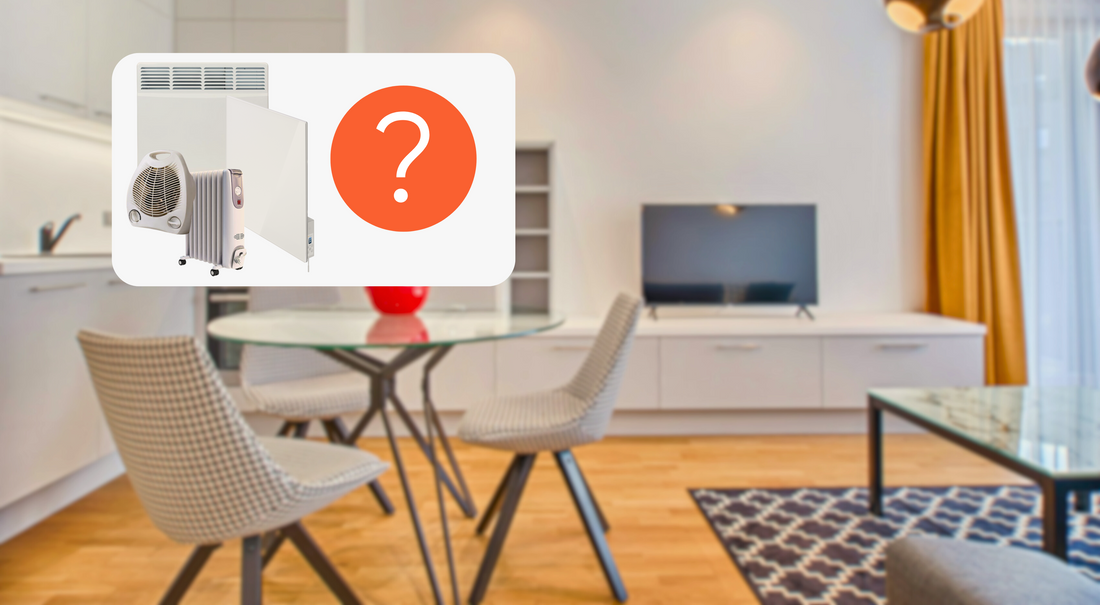
Choosing an Economical Electrical Heater
Share
The Impact of Heating Costs
Heating spaces during the cold season accounts for up to 70% of the monthly utility bill. Residents of Estonia and other Baltic countries anxiously await the winter months, when heating costs consume a significant portion of their budgets.
Even a few percent savings can ultimately lead to tens, hundreds, or in some cases, even thousands of euros saved each month.
Even a few percent savings can ultimately lead to tens, hundreds, or in some cases, even thousands of euros saved each month. Over several years, the accumulated savings could allow for purchasing a car or a summer house. The key to savings lies in smart and well-thought-out decisions.
Why District Heating Remains the Most Affordable Option
District heating remains the most affordable and efficient choice for consumers, with two-thirds of its cost derived from energy resource expenses. With stable and low prices for gas, shale, wood chips, and other fuels, this heating method retains its cost-effectiveness. At the same time, heat losses during transportation from the heating plant to consumers have little impact on overall costs.
Challenges of District Heating
However, if energy resource prices are high and volatile, using a district heating system becomes significantly more expensive. To save on heating costs, radiator temperatures are often lowered, which, in turn, leads to a drop in indoor temperatures, especially during the coldest periods.
Supplemental Heating Solutions for Comfortable Living
To compensate for lower radiator temperatures and maintain comfortable living conditions, various supplemental heating options are available on the market.
In apartment buildings, country houses, and offices, electric heating is a convenient solution. The simplicity of installing and using modern electric heaters, combined with their portability and compact design, makes it easy to turn them on or off, adjust their power levels, and customize heating settings to suit your needs.
Popular Heating Systems: Pros and Cons
⨯ Fan heaters – These devices can quickly heat a large volume of air. However, they tend to spread dust around the room, burn dust particles on the heating element, and excessively dry the air. They are noisy, and their fixed power consumption does not adapt to changing conditions. Typical power consumption is 1.5 to 2 kW.
⨯ Convector heaters – These are the most common type of heaters. They operate quietly (with occasional clicking sounds) and heat rooms quickly. However, they primarily heat the air and nearby objects, excessively drying the air and burning dust. People spending extended time near convector heaters often complain of headaches, lack of oxygen, and stuffiness. Typical power consumption is 1.5 to 2 kW.
⨯ Oil-filled radiators – Metal heaters that are convenient due to their compactness and portability. They operate quietly, do not burn dust, and do not dry out the air. Their ribbed design increases the heat transfer surface. The main drawback is their bulky appearance, making them suitable only as supplementary heaters.
⨯ Infrared panel heaters – Ceramic, metal, or glass heaters that emit most of their heat as infrared rays, warming objects they target. These heaters also have a convective component—air heats up on contact with the large, flat surface of the heater and rises, mixing air layers in the room. They are very quiet, do not dry out the air, do not burn dust, and contain no liquid. They precisely regulate surface and room temperatures. Drawbacks include their slower heating rate due to inertia, requiring correct application.
The Durability and Efficiency of Infrared Heaters
These heaters are among the most durable since they lack moving mechanical parts, motors, and fans, and there is no contact between air and the heating element. The materials used (glass, ceramics, and metal) have proven their reliability over centuries. Thanks to precise control options and their inertia, infrared heaters do not overheat rooms or waste electricity. Wall-mounted options, various color choices, and compact designs make them easy to integrate into any modern interior. Built-in or external thermostats allow them to be connected into complete heating systems.
Achieving Maximum Savings with GPO Heating Devices
Our heating devices help save up to 40% on heating costs compared to other types of heaters with similar power output. This is achieved through our proprietary mobile app, sensors, and server infrastructure.
Learn more about how our heater can help you save on energy costs while maintaining comfort and efficiency in your home.
